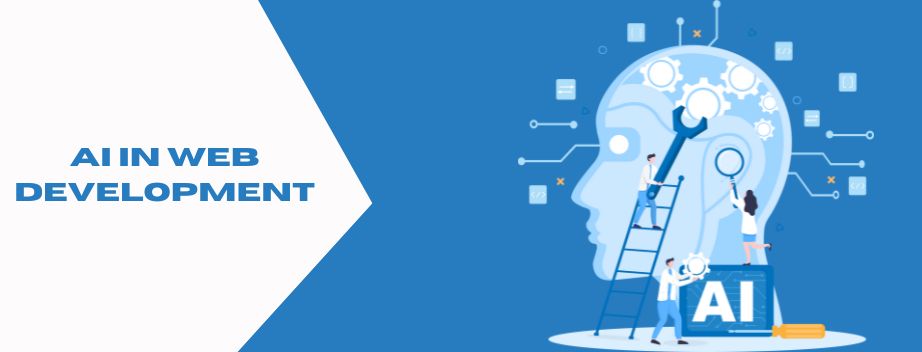
Have you ever imagined how modern websites are just familiar with what you actually want? From personalized recommendations to intelligent chatbots, Artificial Intelligence is revolutionizing the way we experience the web.
As the speed of evolving technology for web development accelerates, AI has emerged as the game-changing force, changing how developers work and users interact online. Whether you're automating tedious coding tasks, creating stunning designs, or going for flawless functionality, AI tools are now essential in every developer's toolkit. It is no longer a question of whether to accept AI in web development but rather how soon to adapt to remain competitive.
Let us dive into the interesting role of AI in web development-from intelligent code generation all the way to automated testing-and discover just how revolutionary these emerging technologies are to help shape the future of this new digital landscape.
AI Technologies Reshaping Web Development
Artificial Intelligence changes the use of ai web development at present. Various cutting-edge technologies are leading to artificial intelligence. Now, Machine Learning algorithms power intelligent code completion and bug prediction systems. Natural Language Processing enables developers to create sophisticated chatbots and voice interfaces. Computer Vision technologies allow advanced image optimization and visual content management.
AI tools greatly enhance developer productivity by automating mundane, repetitive tasks and providing smart code suggestion. The solutions can detect common programming errors in real time, reducing debugging time by as much as 40%. The AI-based development environment shows intelligent code refactoring and optimization suggestions for developers to develop cleaner, more efficient code. AI also helps rapidly prototypable components generation accelerates the development life cycle.
Adoption of AI in web development: AI adoption is increasing exponentially, with more than 60% of development teams using some form of AI tools in their workflow. Market research indicators depict a yearly growth of 35% of AI-powered development tool usage. Leading tech organizations are investing heavily in AI-driven development platforms, while smaller businesses will also increasingly embrace AI-powered solutions to stay ahead in the race. The request for developers with AI expertise has shot up by 74% in the last one year.
Now that we grasp AI's core role in web development, let's move into how AI is transforming code generation and providing intelligent help to developers.
The ones at the forefront of AI-assisted development include GitHub Copilot, TabNine, and Amazon CodeWhisperer. These platforms rely on machine learning to make coding workflows easier and significantly improve developer productivity.
Modern AI systems study coding patterns to provide contextual suggestions and complete whole blocks of code in real-time. These tools can understand multiple programming languages and frameworks, which gives them intelligent and excellent auto-complete functionalities beyond simple syntax completion capabilities, potentially saving developers up to 40% of coding time.
AI debugging tools are now scanning code constantly and determining issues before they become problems. Adding machine learning algorithms to this static code analysis means bugs can be predicted based on typical error patterns, with suggested fixes available instantly, cutting down on debugging time considerably.
AI systems are good at analyzing code performance and suggesting optimizations. They can spot bottlenecks, propose better algorithms, and even optically optimize the code itself for more efficiency. It evaluates several optimization strategies at once- something humans would take considerably longer to do.
Having seen how AI is involved with coding, let's also look into its role regarding web design and user experience optimization.
The AI-enabled design systems are revolutionizing the way people make websites by automatically generating layouts, color schematics, and typography combinations. Based on the analysis of successful designs and what drives users to engage with web pages more, such systems create visually appealing interfaces in accordance with traditional design conventions. Truly modern AI tools can produce complete design systems that honor a brand's consistency while adapting to various screen sizes and user preferences.
These modern machine learning algorithms enable websites to dynamically adjust their interfaces based on individual user behavior. Sensing each user's interactions and preferences and browsing patterns, these smart systems create personalized experiences. From the repositioning of navigation elements to content hierarchy adjustment, AI delivers a customized interface to each visitor that resonates with their unique and creative static website design needs and habits.
AI algorithms are very good at optimizing content placement for maximum engagement. These systems can automatically arrange content blocks, CTAs, and images in positions that drive higher conversion rates by analyzing user interaction data. It does so based on data regarding factors such as scroll depth, click-through rates, and time spent on particular sections.
With such AI-enabled design capabilities changing the game for web developers, let's trace how artificial intelligence has further transformed testing and quality assurance processes to ensure that these complex designs function without a hitch.
These AI-powered testing tools can now automatically generate and execute test cases, reducing manual testing effort to a significant extent. Such systems analyze code patterns and create test scenarios-likely to be missed by even human testers-to effectively ensure coverage across different browsers and devices.
Machine learning algorithms are continuously monitoring the performance metrics of web applications. Bottlenecks are identified, and optimization techniques can be suggested. AI servers monitor times-to-response, load patterns, and resource utilization to adjust configurations automatically for optimal performance.
Advanced AI models scan codebases in real-time to detect potential security threats before they become critical issues.These systems will adapt through the learning of global security databases and evolving threat patterns to provide proactive protection against new vulnerabilities and cyber attacks.
AI analytics tools track and interpret user interactions with applications. It also provides useful insights into application usage patterns that can bring to the fore the various trouble-spots in user flows and may indicate improvement based on actual user behavior rather than assumptions.
Predictive AI models consider historical changes in codes and bug patterns to predict potential problems before they occur. These systems flag risk-prone code modifications and offer pre-emptive remedies so that the bugs have a much lesser chance of making it to production.
Now that we have covered how AI improves testing and quality assurance, let's proceed to see what the future holds for AI in web development and how it will continue to shape the same industry.
Emerging Technologies and Trends
The future of AI in web development is moving at lightning speed with groundbreaking technologies. The state of large language models continues to be so advanced to generate complex structures and even full-fledged web applications. Edge AI emerges as a new phenomenon, allowing for real-time processing and personalization directly in the browser. Advanced neural networks revolutionize visual recognition and natural language processing to make websites more intuitive and accessible.
Impact on Developer Roles
The role of web developers is changing profoundly with increased deployment of AI. Instead of being replaced, developers become AI orchestrators, working on high-level architecture and creative problem-solving. The emphasis turns from writing redundant code to managing AI tools, validating their outputs, and implementing intricate business logic. Developing full-stack developers increasingly need to be familiarized with AI integration and model deployment.
Challenges and Limitations
As promising as AI appears in web development, it has various challenges ahead. Data privacy becomes a significant issue, especially when AI-powered personalization is concerned. Technically speaking, it requires high computing power resources. Outputs generated through AI can be biased in
AI-based code. It also questions the reliability of the AI solutions that will see mission-critical applications where human oversight still needs to be taken for the development processes.
The future of AI, web development, and combining all the traditional practices will keep getting more exciting. These developers must continually learn and upgrade themselves.
AI has revolutionized the way we create, test, and deploy websites and applications. Currently, with auto-generation of code, intelligent design solutions, and enhanced testing capabilities, AI is making web development more efficient, accessible, and reliable than ever.
As we look to the future, embracing AI-powered development tools isn't just optional; it's necessary to stay ahead in the evolving digital landscape. Whether you are a seasoned developer or just getting started, now is the perfect moment to dive and learn how to integrate AI into your workflow. Start small, experiment with some of the already available tools, and gradually grow your AI toolkit to effectively alter your development workflow.
 Kanhu Charan Behera
Kanhu Charan Behera
Copyright @2020. All Rights Reserved by WEB DIGITAL MANTRA IT SERVICES PVT LTD
Post Reviews